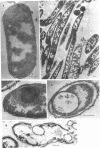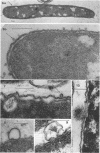Abstract
Electron microscopic studies with Escherichia coli revealed that bicyclomycin inhibits septum formation and converts the cells to filamentous forms. The antibiotic induced high undulation and numerous blebs of the outer membrane. Sometimes cytoplasmic contents leaked into the lumen of the bleb through a disrupted region of the membrane. Breakage of the outer membrane or blebs led to cell lysis. Electron-dense masses of amorphous material and vesicles were found in the cytoplasm.
Full text
PDF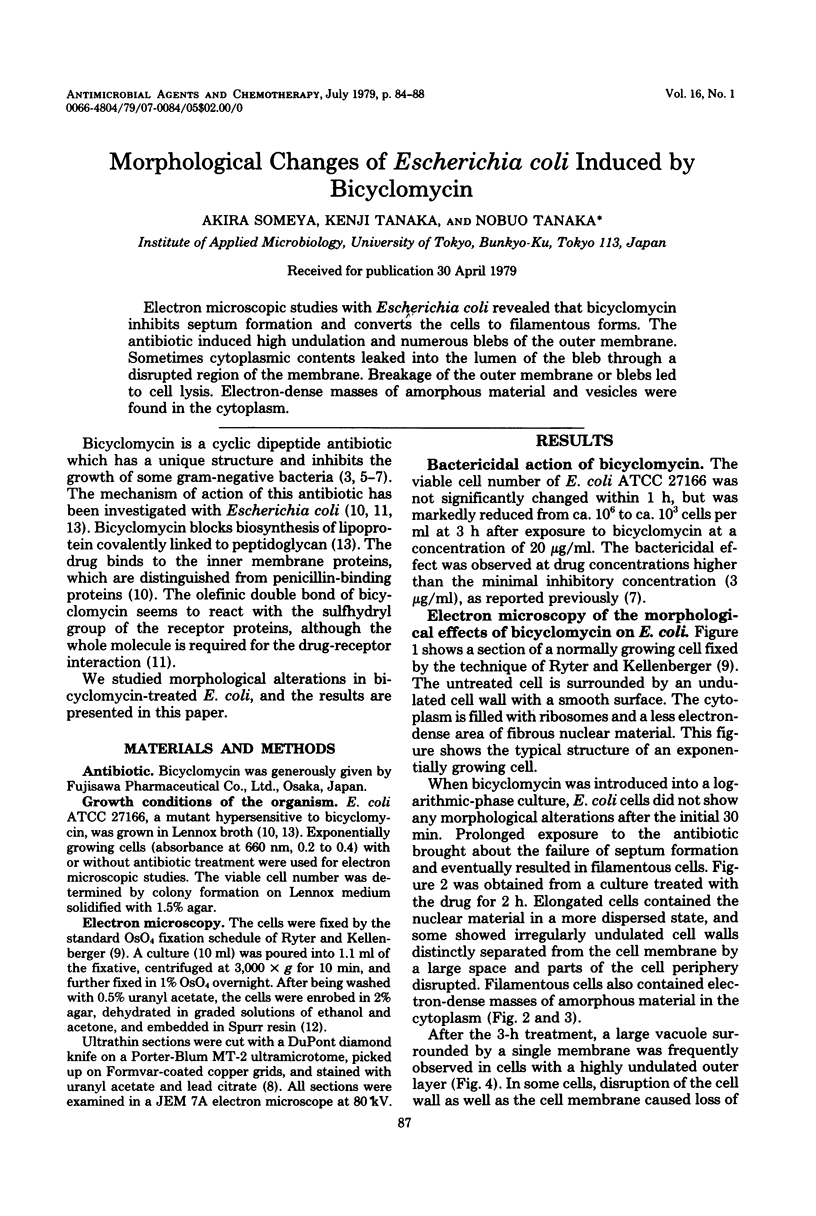
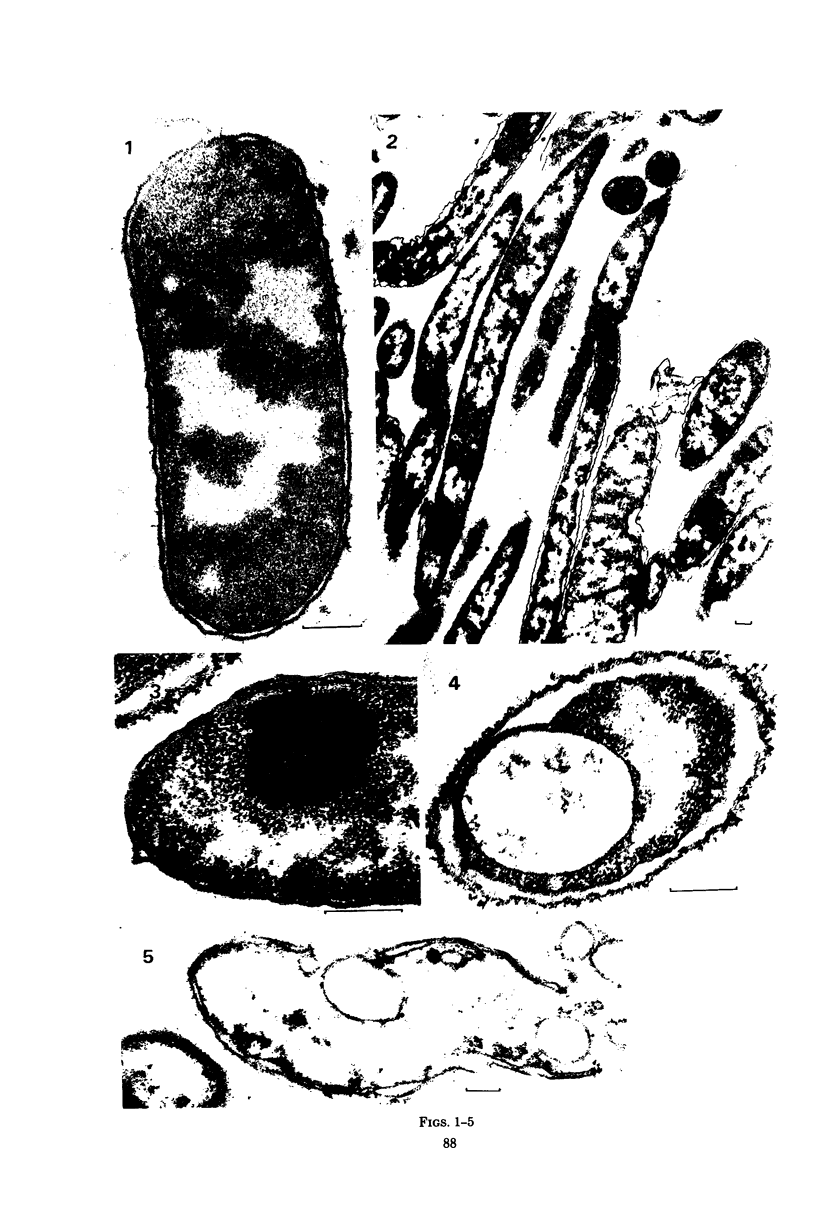
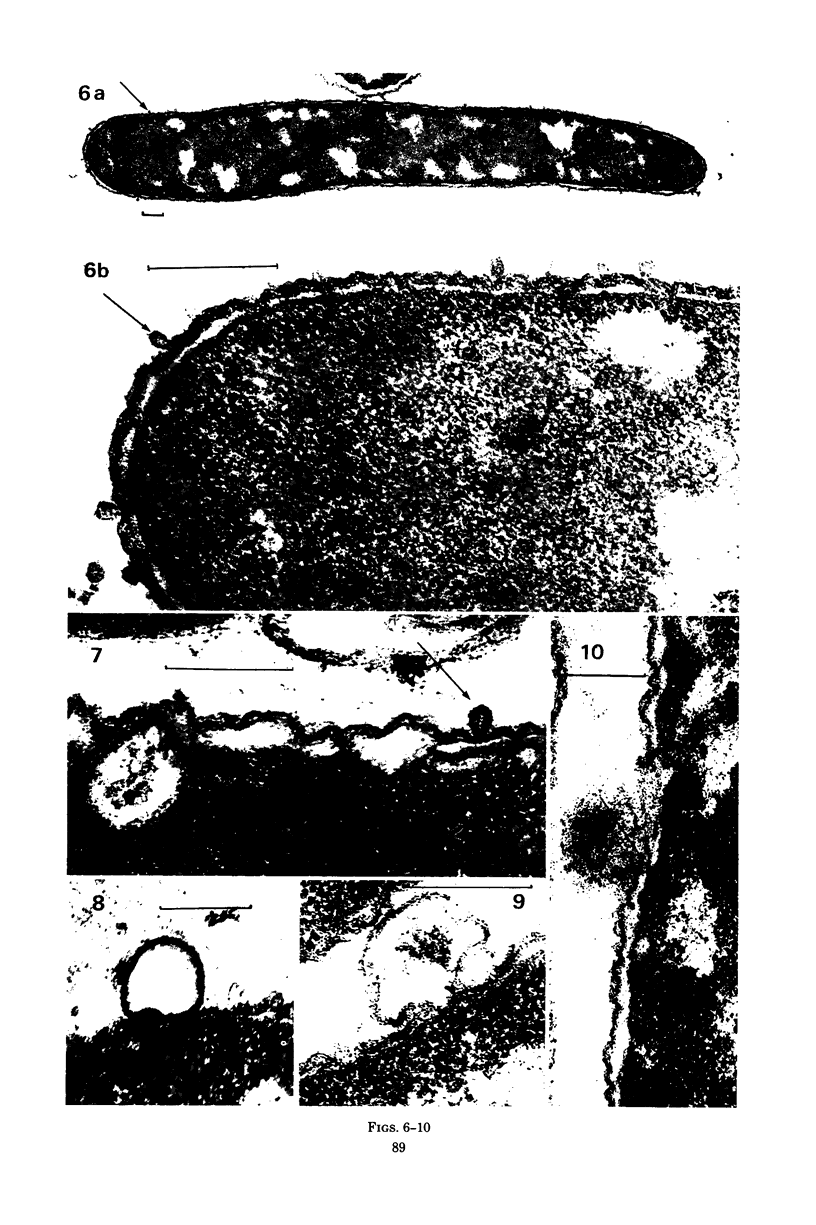
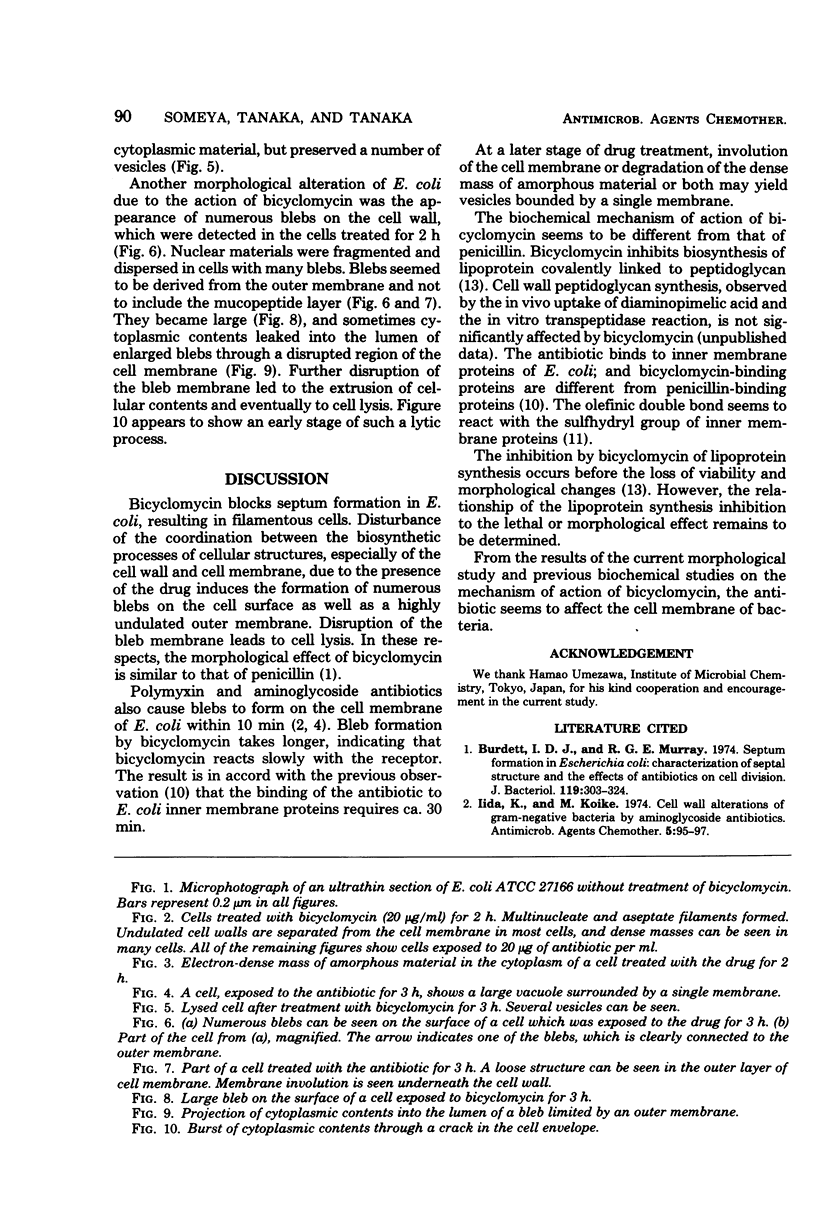
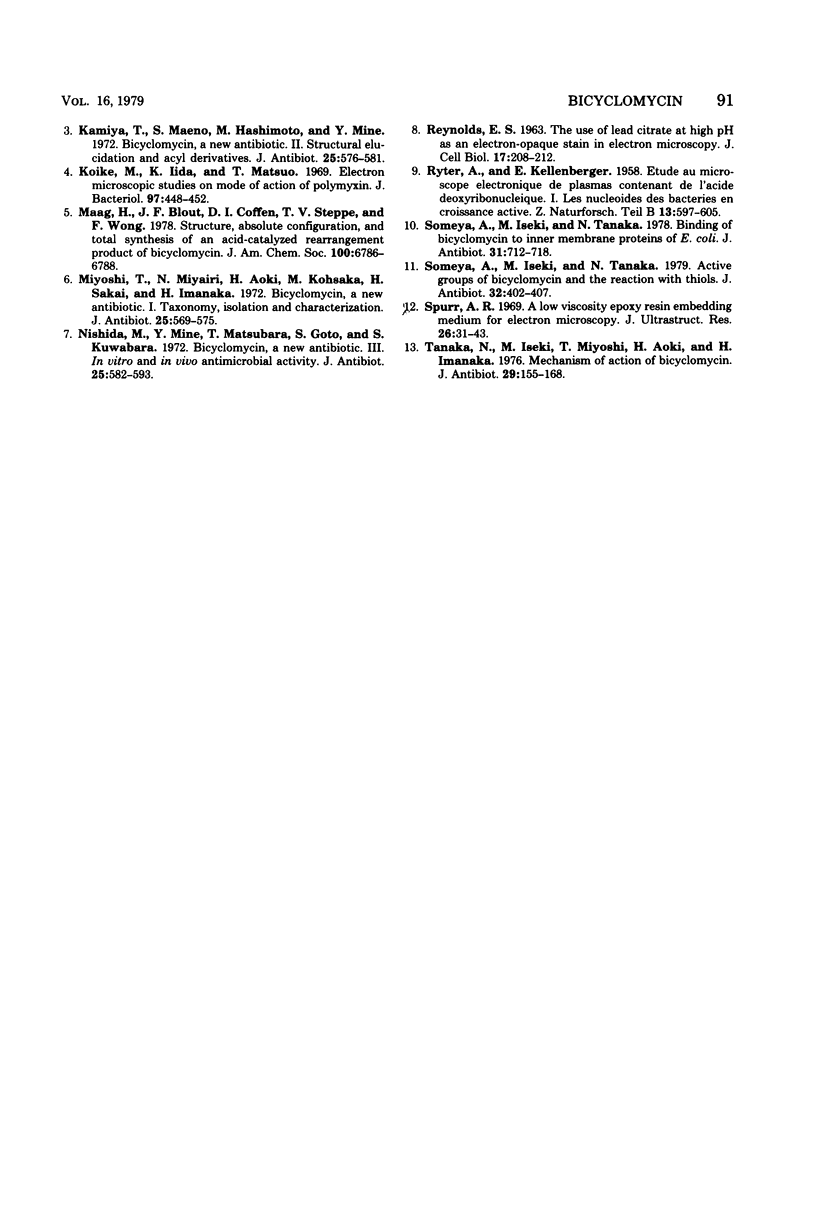
Images in this article
Selected References
These references are in PubMed. This may not be the complete list of references from this article.
- Burdett I. D., Murray R. G. Septum formation in Escherichia coli: characterization of septal structure and the effects of antibiotics on cell division. J Bacteriol. 1974 Jul;119(1):303–324. doi: 10.1128/jb.119.1.303-324.1974. [DOI] [PMC free article] [PubMed] [Google Scholar]
- Iida K., Koike M. Cell wall alterations of gram-negative bacteria by aminoglycoside antibiotics. Antimicrob Agents Chemother. 1974 Jan;5(1):95–97. doi: 10.1128/aac.5.1.95. [DOI] [PMC free article] [PubMed] [Google Scholar]
- Kamiya T., Maeno S., Hashimoto M., Mine Y. Bicyclomycin, a new antibiotic. II. Structural elucidation and acyl derivatives. J Antibiot (Tokyo) 1972 Oct;25(10):576–581. [PubMed] [Google Scholar]
- Koike M., Iida K., Matsuo T. Electron microscopic studies on mode of action of polymyxin. J Bacteriol. 1969 Jan;97(1):448–452. doi: 10.1128/jb.97.1.448-452.1969. [DOI] [PMC free article] [PubMed] [Google Scholar]
- Miyoshi T., Miyairi N., Aoki H., Kosaka M., Sakai H. Bicyclomycin, a new antibiotic. I. Taxonomy, isolation and characterization. J Antibiot (Tokyo) 1972 Oct;25(10):569–575. doi: 10.7164/antibiotics.25.569. [DOI] [PubMed] [Google Scholar]
- Nishida M., Mine Y., Matsubara T., Goto S., Kuwahara S. Bicyclomycin, a new antibiotic. 3. In vitro and in vivo antimicrobial activity. J Antibiot (Tokyo) 1972 Oct;25(10):582–593. [PubMed] [Google Scholar]
- REYNOLDS E. S. The use of lead citrate at high pH as an electron-opaque stain in electron microscopy. J Cell Biol. 1963 Apr;17:208–212. doi: 10.1083/jcb.17.1.208. [DOI] [PMC free article] [PubMed] [Google Scholar]
- RYTER A., KELLENBERGER E., BIRCHANDERSEN A., MAALOE O. Etude au microscope électronique de plasmas contenant de l'acide désoxyribonucliéique. I. Les nucléoides des bactéries en croissance active. Z Naturforsch B. 1958 Sep;13B(9):597–605. [PubMed] [Google Scholar]
- Someya A., Iseki M., Tanaka N. Active groups of bicyclomycin and the reaction with thiols. J Antibiot (Tokyo) 1979 Apr;32(4):402–407. doi: 10.7164/antibiotics.32.402. [DOI] [PubMed] [Google Scholar]
- Someya A., Iseki M., Tanaka N. Binding of bicyclomycin to inner membrane proteins of E. coli. J Antibiot (Tokyo) 1978 Jul;31(7):712–718. doi: 10.7164/antibiotics.31.712. [DOI] [PubMed] [Google Scholar]
- Spurr A. R. A low-viscosity epoxy resin embedding medium for electron microscopy. J Ultrastruct Res. 1969 Jan;26(1):31–43. doi: 10.1016/s0022-5320(69)90033-1. [DOI] [PubMed] [Google Scholar]
- Tanaka N., Iseki M., Miyoshi T., Aoki H., Imanaka H. Mechanism of action of bicyclomycin. J Antibiot (Tokyo) 1976 Feb;29(2):155–168. doi: 10.7164/antibiotics.29.155. [DOI] [PubMed] [Google Scholar]



